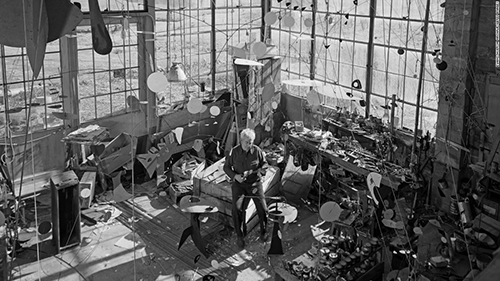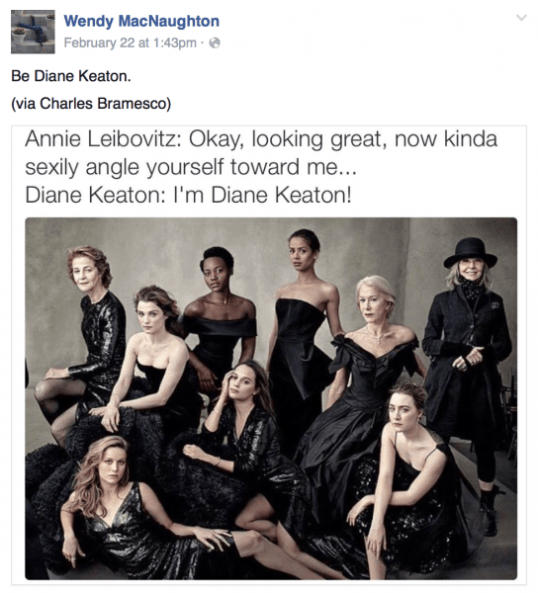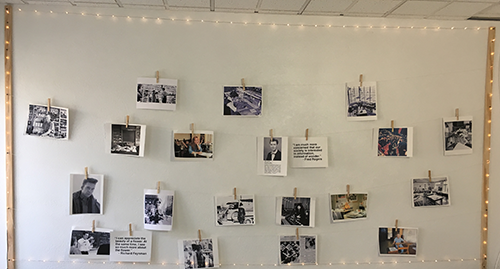All I do all day, every day, is work in the trenches with writers and artists. Today I want to share the 3 essential habits that successful creators use to battle distraction, create work that matters, and grow their audience.
Let’s dig in…
#1 Focus on One Thing
The first habit is to focus on one thing. I mean this in two ways. The first is that they have total clarity on what matters most. They have identified the projects they should be working on, and how these lead to their larger goals.
What this means is that they have to constantly say “no” to distractions and competing priorities, in order to say “yes” with vigor to what matters most. This sounds easier than it is. Often, we don’t say “no” because we fear letting others down, and the potential social backlash that can come with this.
The second way to consider the value of “one thing,” is how you focus your attention. Writers & artists who get things done are those who focus intently on the task at hand. They don’t have email up, aren’t checking Facebook, and don’t drop the paintbrush when they should be working so that they can check the news.
There are a lot of practical ways to focus on one thing. Successful writers and artist focus on their “one thing” in the following ways:
- They put the phone down. Or they set it to ‘airplane mode’ or ‘silent mode’ for a period of time. Or even, *gasp* turn it off.
- They make time to create. It is on their calendar, or part of their daily routine.
- They have communicated to others what their “one thing” is. They aren’t worried that by sharing this, the other people will reject them. I know, that sounds silly to many of you, but creating can feel as though you are welcoming others to judge you. When you communicate to others that you are creating, it is also a signal that this is important, perhaps more important than other tasks they would prefer you to be doing right now. The writer and arts needs to resist the sense of judgement this brings.
- They turn off email. Turn off the TV. Shut down the computer if they don’t need it for creating.
- They have standard methods of saying “no” with grace. This is indeed a habit. If you only say “no” once in a blue moon, then it will feel arduous, even painful. Make a habit out of this that feels kind and meaningful to both you and the other person.
- They assess their “one thing” and progress toward it at regular intervals. I think of these as reminders — that can be daily, weekly, monthly, quarterly, yearly — that helps keep you on track to creating work that matters.
When I talk to people who create, one thing I hear often is that they are buried in email. It is a constant source of distraction and frustration. I want to help you fix this, so I invite you to Join me for a free workshop on Wednesday Dec 20th at 2pm ET: Inbox Zero Every Day. Finally Take Back Control of Your Time and Attention. You will learn so much in this hour, I’ll take you inside my personal system for having total control over email. Sign up here.
#2 Develop Systems that Free You to Create
Most writers and artists I know resist the idea of systems around their creative work. They prefer to be inspired by the muse, and to frame their creative work around this idea of feeling free. They worry that a “system” will make them feel constricted. That it will turn their joy into another boring task.
Yet, I have found that systems don’t need to be constricting. In fact, they can be freeing, allowing you to create more often, with more depth, and greater fulfillment.
Before we dig into this further, I think we have to talk about a hard truth. Creating is difficult. Really difficult. Even for writers and artists who are successful.
I saw this post recently from artist & illustrator Rebecca Green. It’s worth noting that she has 223,000 followers on Instagram — she is someone who is successful in so many ways. Yet recently she posted this:
“I have to be honest, my well is empty. Bone dry. It’s been a rough last six months and recently, strange as it sounds, when I show up to my drawing table, I have an immense urge to weep, sing, or run. Anything but make art. This is of course, extremely difficult when you make art for a living, so I suppress those feelings and keep pushing and showing up and am happy to do so. I am though, experiencing a major burn out that’s unlike anything I’ve ever gone through. Work has always ebbed and flowed with periods of intense creativity and moments of resentment, but this time feels a little too deep. I find myself unmotivated, lost, and not sure who I am, what I make or why any of it matters.”
Why do I share this? To encourage you to prepare for the fact that creative work is a journey. This is why I want you to find clarity in your work, to develop systems to support it, and collaborators (more on that below!) to help you along the way.
Don’t think that if you just reach a certain milestone, everything will become easier. Instead: prepare for success. Find your clarity, your systems, your collaborators.
What can systems look like for a working writer or artist? Some questions to ask yourself to get started:
- How do you know you will have the time and energy to create next week?
- How do you know when to begin a project, but also when to end — to publish and share — the project?
- How do you connect with others who appreciate the kind of work you create? Do you wait for haphazard connections during the 2 days a year you go to a conference? Or is it a system to reach out and connect?
Each of these answers can be comprises of simple systems you create for yourself.
#3 Find Collaborators
If you want to be certain that you will fail, then try to be a “lone wolf” with your creative work. Tell yourself that you need to do it all on your own. Successful writers and artists collaborate. They have a wide range of formal and informal partners in their work.
I don’t just mean having a literary agent, or a gallery who represents you. I mean having relationships with colleagues with create work similar to yours. Or having true connections to people who like the kind of work you create — not just having “followers” who clicked a button on social media.
One of my favorite ways to do this is via a mastermind. I just posted a new 30 minute podcast episode where I explain:
- What a mastermind is
- Why masterminds are a powerful way to ensure you make progress
- Different ways to create or join a mastermind
- My best advice on how to manage a mastermind successfully
You can listen to it on my blog or via iTunes.
I would love to know: what is one habit can you change today to make your creative life more productive?
Thanks!
-Dan
P.S. Reminder: My mastermind program is open for registration. Choose your own adventure:
- Craft Your Creative Roadmap for 2018
- Build Your Creative Power Habits
- Find Your First 10 Super Fans
Register for one of these here: https://wegrowmedia.com/mm/



